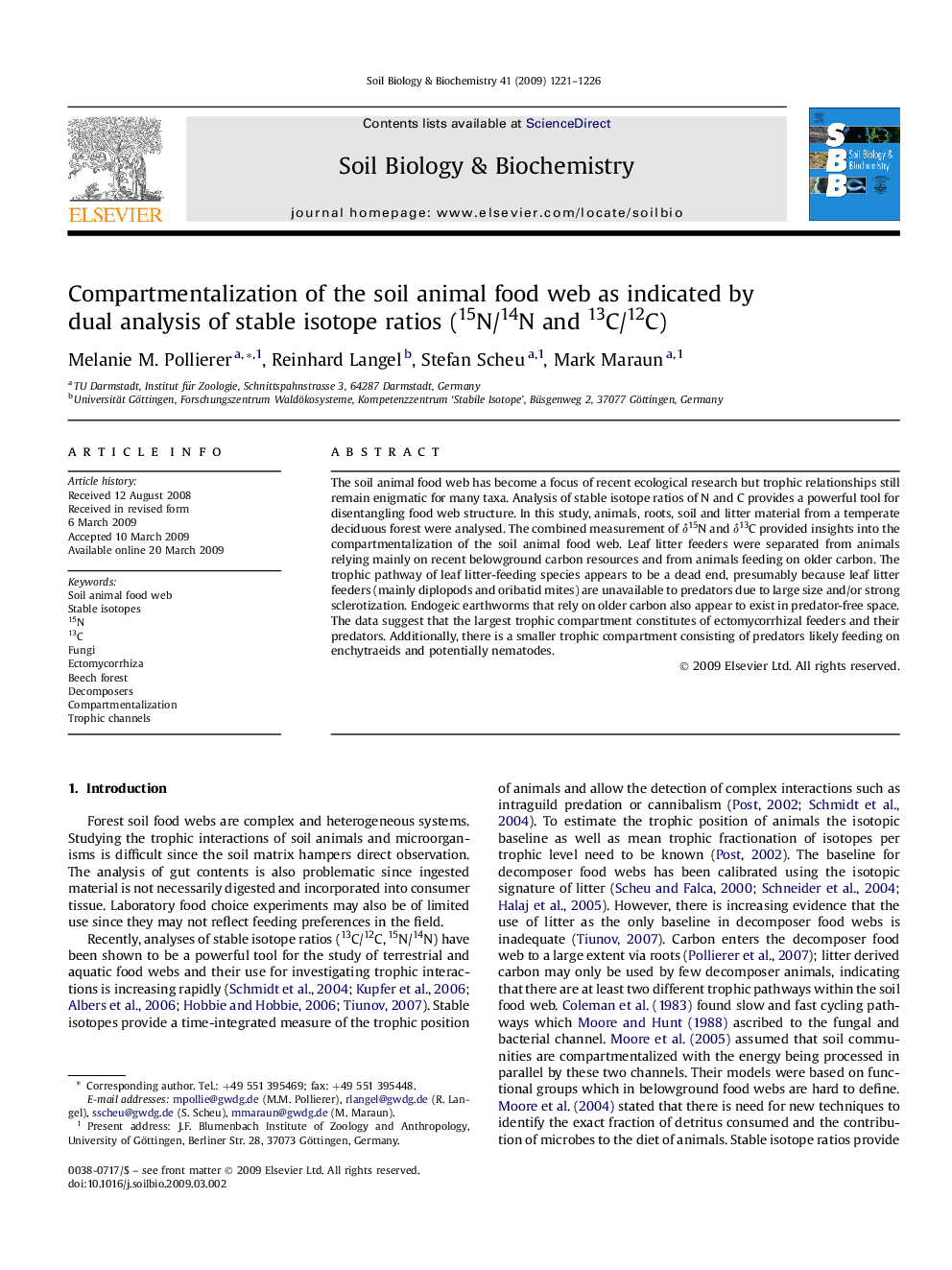| Article ID | Journal | Published Year | Pages | File Type |
|---|---|---|---|---|
| 2025624 | Soil Biology and Biochemistry | 2009 | 6 Pages |
The soil animal food web has become a focus of recent ecological research but trophic relationships still remain enigmatic for many taxa. Analysis of stable isotope ratios of N and C provides a powerful tool for disentangling food web structure. In this study, animals, roots, soil and litter material from a temperate deciduous forest were analysed. The combined measurement of δ15N and δ13C provided insights into the compartmentalization of the soil animal food web. Leaf litter feeders were separated from animals relying mainly on recent belowground carbon resources and from animals feeding on older carbon. The trophic pathway of leaf litter-feeding species appears to be a dead end, presumably because leaf litter feeders (mainly diplopods and oribatid mites) are unavailable to predators due to large size and/or strong sclerotization. Endogeic earthworms that rely on older carbon also appear to exist in predator-free space. The data suggest that the largest trophic compartment constitutes of ectomycorrhizal feeders and their predators. Additionally, there is a smaller trophic compartment consisting of predators likely feeding on enchytraeids and potentially nematodes.
